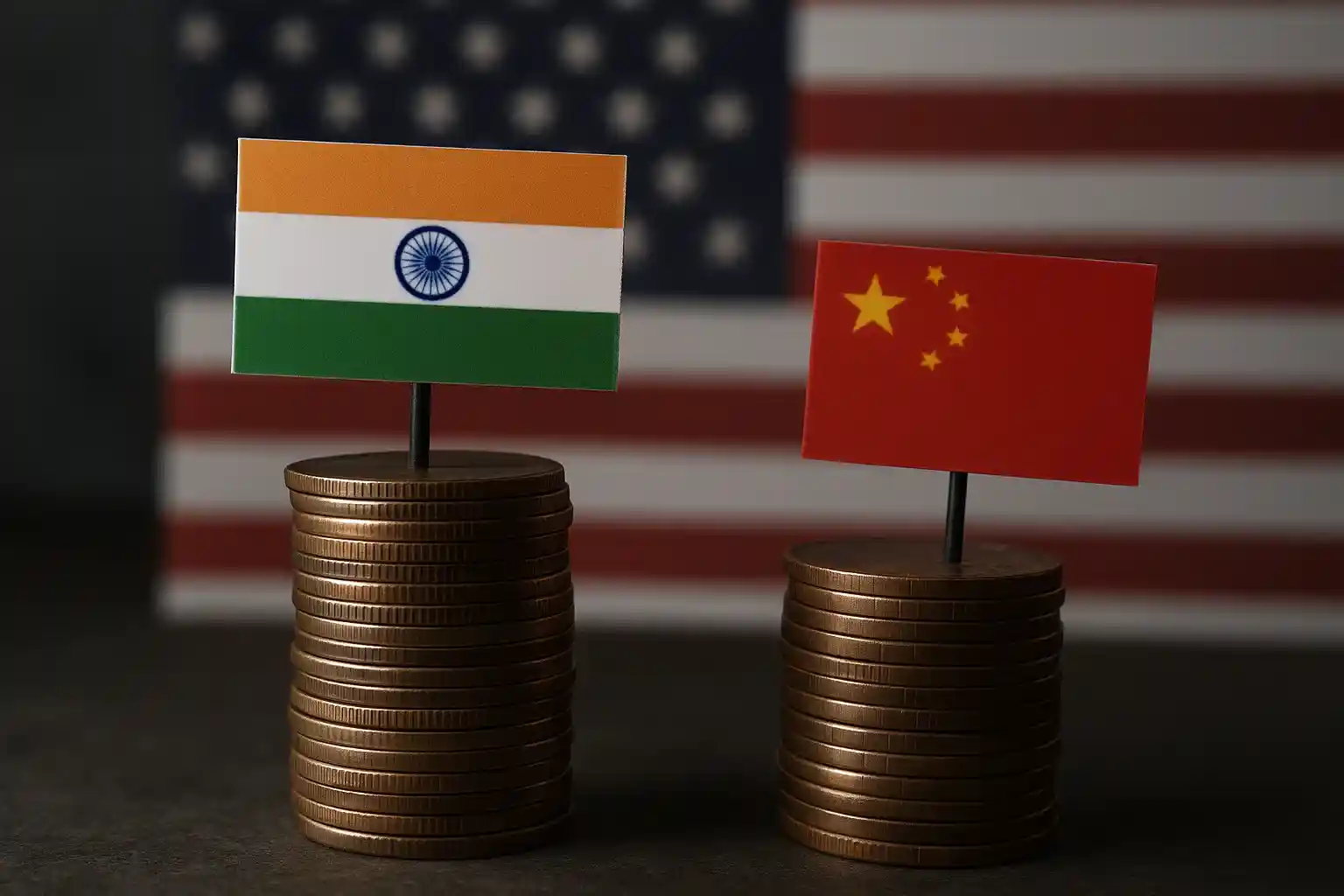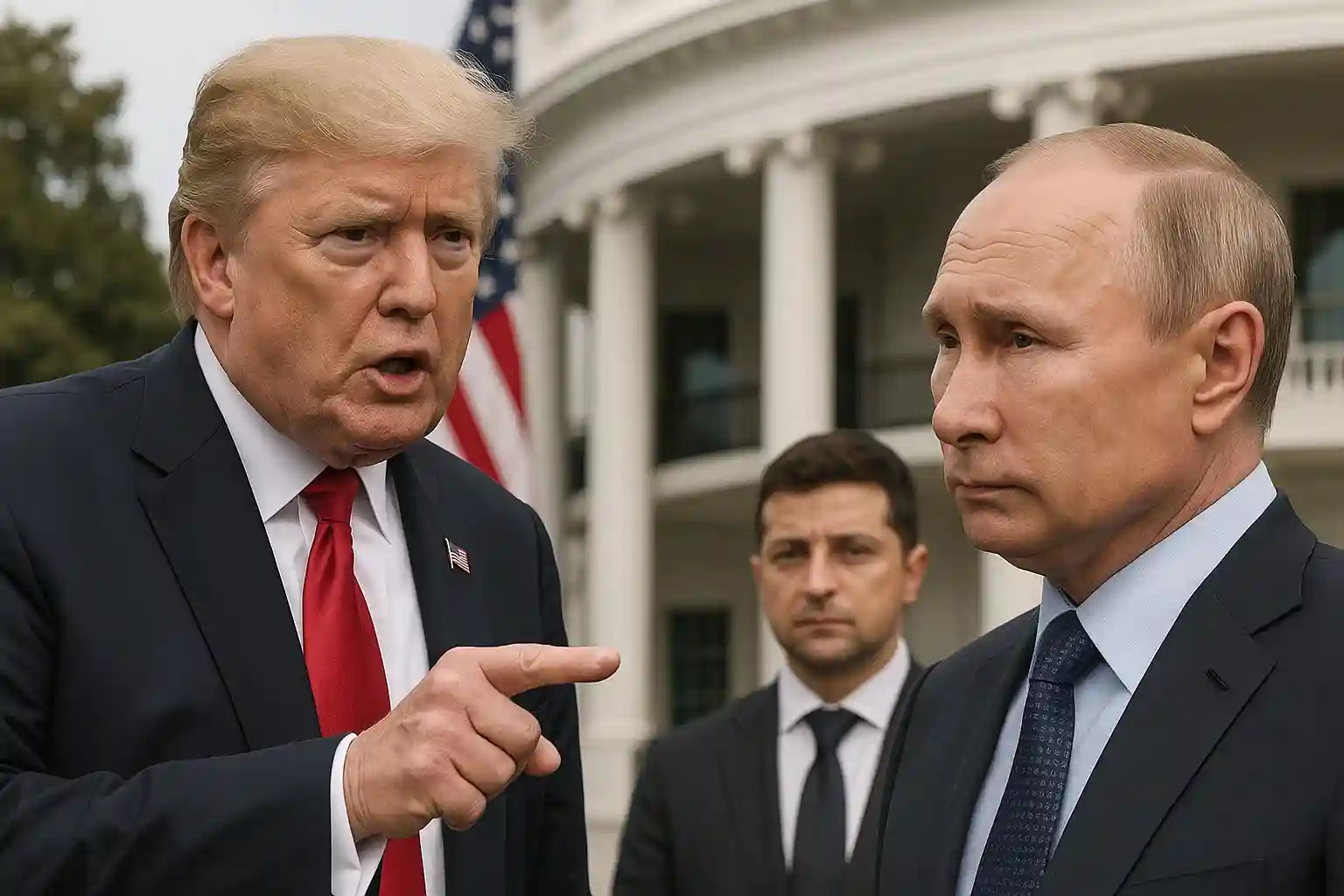A Tale of Two Tariffs: Why India is Punished While China is Spared

A Tale of Two Tariffs: Why India is Punished While China is Spared
In a bewildering twist in global trade dynamics, the United States, which for years had singled out China as its primary economic adversary, has now imposed a severe 50% tariff on Indian goods while simultaneously de-escalating trade tensions with Beijing. This unexpected "tale of two tariffs" has left many baffled, revealing a new phase in U.S. foreign policy where economic pressure is being used not just for trade, but to reshape global alliances.
The contrast in treatment is stark. While India now faces punitive tariffs and the postponement of a critical trade deal, the U.S. has extended a tariff truce with China for another 90 days. This policy, which appears to contradict the years-long effort to cultivate India as a democratic counterweight to China, has sparked accusations of "double standards" and a massive trust deficit in New Delhi.
A Strategic Gamble: Punishing a Friend, Spacing Out a Rival
According to analysts, the U.S. is not acting out of economic irrationality, but is executing a calculated geopolitical gamble. The 50% tariff on India is specifically designed as a punishment for its continued purchase of Russian oil, an attempt to force New Delhi to align with Washington's stance on the Ukraine conflict. The logic, it seems, is to use a heavy-handed approach on a long-standing partner to compel a clear choice of alignment.
Conversely, by offering a temporary reprieve to China, the U.S. is hoping to avoid a complete decoupling of global supply chains and to manage its economic competition with Beijing on a different timetable. This strategy, however, has a critical flaw: it risks alienating a pivotal partner in the Indo-Pacific while inadvertently providing a strategic window for its main rival.
China's Quiet Victory, India's Rising Conundrum
For China, this is a quiet but significant victory. The de-escalation of trade tensions with the U.S. allows Beijing to focus on its own economic recovery and on strengthening regional trade ties. Chinese officials have seized the opportunity, with China's Ambassador to India publicly stating that Beijing "will firmly stand with India" against the "bully" tactics of the U.S. and offering to welcome Indian goods into the Chinese market.
Meanwhile, India faces a deepening conundrum. After years of being praised as a reliable partner, it now finds itself a target of the very policies it was expected to help enforce. This perceived betrayal is reinforcing India's commitment to its policy of strategic autonomy, convincing New Delhi that its economic and security interests are best served by diversifying its partnerships and reducing its reliance on any single superpower.
The U.S. policy, which once had the unintended effect of pushing India and China closer together, now threatens to deepen their ties further by making them allies against a shared economic pressure. The tale of two tariffs is not just a story of unequal trade, but a narrative of how a great power’s short-sighted gamble could ultimately lead to a fundamental reordering of global alliances.


